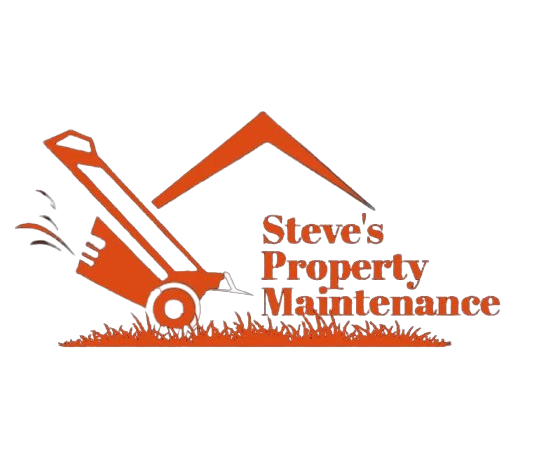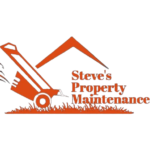As autumn draws near, many homeowners begin to question, ‘When should I stop lawn care in fall?’ This is a crucial topic for maintaining a healthy and thriving yard. Understanding your lawn’s specific needs during this transitional season can help you prepare for the colder months ahead. In this essential guide, we’ll delve into the signs that signify it’s time to cease lawn care activities, as well as the final tasks you should undertake to ensure your lawn survives winter and emerges vibrant in spring.

Key Takeaways
- Understanding your lawn’s specific needs is crucial for effective fall care.
- Look for signs like decreased growth and changing leaf colors to know when to stop lawn maintenance.
- Ceasing lawn care at the right time helps your grass prepare for winter dormancy.
- Final tasks like aerating and fertilizing are essential before your lawn goes dormant.
- A well-prepared lawn in the fall leads to a healthier and more vibrant yard in spring.
Understanding Your Lawn’s Needs in Fall
As the vibrant colors of autumn begin to paint the landscape, many homeowners find themselves asking, ‘When should I stop lawn care in fall?’ Understanding your lawn’s needs during this transitional season is crucial for maintaining its health and vibrancy. Generally, the answer lies in the temperature and growth patterns of your grass. As temperatures begin to dip consistently below 50 degrees Fahrenheit, growth slows down significantly, indicating it’s time to adjust your lawn care routine. A good rule of thumb is to stop fertilizing once the grass stops growing, usually around late October to early November, depending on your geographical location. Additionally, while you may consider halting mowing, keeping the grass at a manageable height until it stops growing can help prevent winter damage. Overall, recognizing your lawn’s specific needs in fall will ensure that it emerges healthy and robust come spring.
Key Signs That Indicate It’s Time to Stop Lawn Care
As the days grow shorter and temperatures begin to drop, many homeowners find themselves wondering, ‘When should I stop lawn care in fall?’ Understanding the right time to ease up on lawn maintenance is crucial for the health of your grass and to prepare your yard for winter. Key signs that indicate it’s time to stop lawn care include noticeable changes in grass growth—specifically when the grass begins to slow its growth significantly. This typically occurs when temperatures consistently fall below 50 degrees Fahrenheit, signaling that your lawn is entering its dormant phase. Additionally, you should look at the color of your grass; if it starts to turn brown or fails to respond to fertilizers consistently, it may be time to give your lawn a much-needed break. Moreover, if you notice excessive moisture or seasonal precipitation, it could lead to fungal issues and diseases, which is another signal to suspend your standard lawn care practices. Understanding these signs will help you maintain a healthy lawn year-round, ensuring it thrives when spring arrives.
‘To nurture the garden is to feed not just on the body, but the soul.’ – Alfred Austin
 lawn care in fall?’ The answer lies in understanding the seasonal needs of your lawn. Typically, the end of October to early November marks the period when grass growth slows significantly, and the lawn enters dormancy. However, before you put away the lawn care tools for the season, there are crucial final tasks to complete. Begin by giving your lawn a last mowing session, lowering the blade slightly to prevent mold formation under snow. Additionally, apply a layer of mulch to protect the soil, as well as a winter fertilizer, which helps grass strengthen its roots before the ground freezes. Finally, ensure to clear away leaves and debris, which can suffocate the grass and lead to disease. By taking these steps, you will not only prepare your lawn for winter effectively but also set the stage for a vigorous revival in spring.
lawn care in fall?’ The answer lies in understanding the seasonal needs of your lawn. Typically, the end of October to early November marks the period when grass growth slows significantly, and the lawn enters dormancy. However, before you put away the lawn care tools for the season, there are crucial final tasks to complete. Begin by giving your lawn a last mowing session, lowering the blade slightly to prevent mold formation under snow. Additionally, apply a layer of mulch to protect the soil, as well as a winter fertilizer, which helps grass strengthen its roots before the ground freezes. Finally, ensure to clear away leaves and debris, which can suffocate the grass and lead to disease. By taking these steps, you will not only prepare your lawn for winter effectively but also set the stage for a vigorous revival in spring.
Frequently Asked Questions
When should I stop lawn care in fall?
You should consider stopping lawn care in fall when the temperatures consistently drop below 50°F, and your grass begins to slow its growth. Typically, this occurs in late October to early November, depending on your geographical location.
What are the key signs that indicate it’s time to stop lawn care?
Key signs include the grass slowing down in growth, a color change to browner shades, and less moisture retention in the soil. Additionally, if you notice frost in the mornings, that’s a clear indicator it’s time to scale back care.
Should I continue mowing my lawn in the fall?
Yes, you should continue mowing your lawn until the grass has stopped growing. Mow at a height of around 2.5 to 3 inches to prepare for winter, but avoid cutting it too short as that can expose the grass to winter stress.
What final tasks should I do before my lawn goes dormant for winter?
Before your lawn goes dormant, ensure to aerate, fertilize with a winterizer, and apply a final layer of mulch or leaves. Also, it’s vital to remove any debris or leaves to prevent mold and disease.
Is it necessary to fertilize before stopping lawn care?
Yes, it is highly recommended to apply a winterizer fertilizer before stopping lawn care. This will provide your lawn with the necessary nutrients to sustain it through the winter months and promote healthy growth in the spring.
[h3]Looking for Expert Landscaping in Connecticut?[/h3]
At Steve’s Property Maintenance, we provide professional landscaping services in Groton, Waterford, Stonington, Mystic, and surrounding areas. Whether you need lawn care, garden design, mulching, or seasonal cleanup, we’re here to help!
📞 Call us at (860) 847-3441 to Get a Free Quote!

